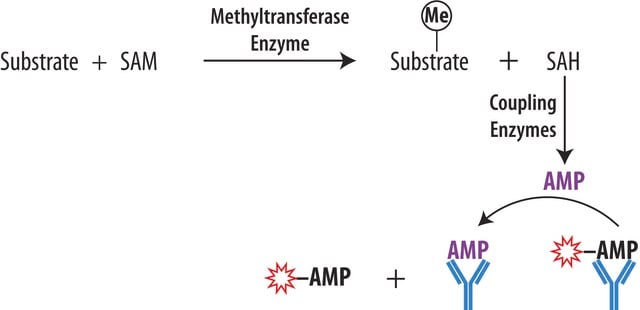03-248
RIPAb+ pan Ago - RIP Validated Antibody and Primer Set
clone 2A8, from mouse
Synonyme(s) :
Eukaryotic translation initiation factor 2C, 2, Protein argonaute-2, Ago2, Protein slicer, Argonaute2, PAZ Piwi domain protein, Ago4, Argonaute4, Protein argonaute-4
About This Item
Produits recommandés
Source biologique
mouse
Niveau de qualité
Forme d'anticorps
purified immunoglobulin
Clone
2A8, monoclonal
Espèces réactives
human
Fabricant/nom de marque
RIPAb+
Upstate®
Technique(s)
RIP: suitable
immunocytochemistry: suitable
immunohistochemistry: suitable
immunoprecipitation (IP): suitable
western blot: suitable
Isotype
IgG1κ
Numéro d'accès NCBI
Numéro d'accès UniProt
Conditions d'expédition
dry ice
Description générale
Argonaute (Ago) proteins are a family of proteins of ~95 kDa that bind directly to mature miRNAs. In mammals, there are four Ago proteins (Ago1-4). This family of proteins is a central component of most mammalian miRNPs that mediates important functions in small RNA-directed regulatory pathways.
Spécificité
Immunogène
Application
Epigenetics & Nuclear Function
Transcription Factors
RNA Metabolism & Binding Proteins
Representative lot data.
HeLa cell lysate was probed with Anti-pan Ago, clone 2A8 (0.5 μg/mL). Proteins were visualized using a Goat Anti-Mouse IgG secondary antibody conjugated to HRP and chemiluminescence detection system.
Arrows indicates Ago (~ 95 kDa) and Radixin (~70 kDa). (Figure 2).
Immunoprecipitation Analysis: A representative lot was used by an independent laboratory in IP. (Nelson, P., et al. (2007). RNA. 13:1787–1792.)
Immunocytochemistry Analysis: A representative lot was used by an independent laboratory in IC. (Nelson, P., et al. (2007). RNA. 13:1787–
1792.)
Immunohistochemistry Analysis: A representative lot was used by an independent laboratory in IH. (Nelson, P., et al. (2007). RNA. 13:1787–
1792.)
Conditionnement
Qualité
Representative lot data.
RIP Lysate prepared from 293 cells (2 X 10E7 cell equivalents per IP) were subjected to immunoprecipitation using 5 µg of either a normal mouse IgG or 5 µg of Anti-pan Ago antibodyand the Magna RIP® RNA-Binding Protein Immunoprecipitation Kit (Cat. # 17-700).
Successful immunoprecipitation of Argonaute proteins-associated RNA was verified by qPCR using RIP Primers IGF2, (Figure 1).
Please refer to the Magna RIP (Cat. # 17-700) or EZ-Magna RIP (Cat. # 17-701) protocol for experimental details.
Description de la cible
Note that this antibody has been reported to cross-react with radixin (~70 kDa). (Nelson, P., et al. (2007). RNA. 13:1787–1792.)
Forme physique
Normal Mouse IgG. One vial containing 125 µg of purified mouse IgG in 125 µL of storage buffer containing 0.1% sodium azide. Store at -20°C.
RIP Primer IGF2. One vial containing 75 μL of 5 μM of each primer specific for human IGF2 mRNA. Store at -20°C.
FOR: GCG GCT TCT ACT TCA GCA G
REV: CAG GTG TCA TAT TGG AAG AAC
Stockage et stabilité
Handling Recommendations: Upon receipt, and prior to removing the cap, centrifuge the vial and gently mix the solution. Aliquot into microcentrifuge tubes and store at -20°C. Avoid repeated freeze/thaw cycles, which may damage IgG and affect product performance. Note: Variabillity in freezer temperatures below -20°C may cause glycerol containing solutions to become frozen during storage.
Remarque sur l'analyse
Includes negative control normal mouse IgG antibody and control primers specific for the cDNA of human IGF2 mRNA.
Autres remarques
Informations légales
Clause de non-responsabilité
Code de la classe de stockage
10-13 - German Storage Class 10 to 13
Certificats d'analyse (COA)
Recherchez un Certificats d'analyse (COA) en saisissant le numéro de lot du produit. Les numéros de lot figurent sur l'étiquette du produit après les mots "Lot" ou "Batch".
Déjà en possession de ce produit ?
Retrouvez la documentation relative aux produits que vous avez récemment achetés dans la Bibliothèque de documents.
Notre équipe de scientifiques dispose d'une expérience dans tous les secteurs de la recherche, notamment en sciences de la vie, science des matériaux, synthèse chimique, chromatographie, analyse et dans de nombreux autres domaines..
Contacter notre Service technique








